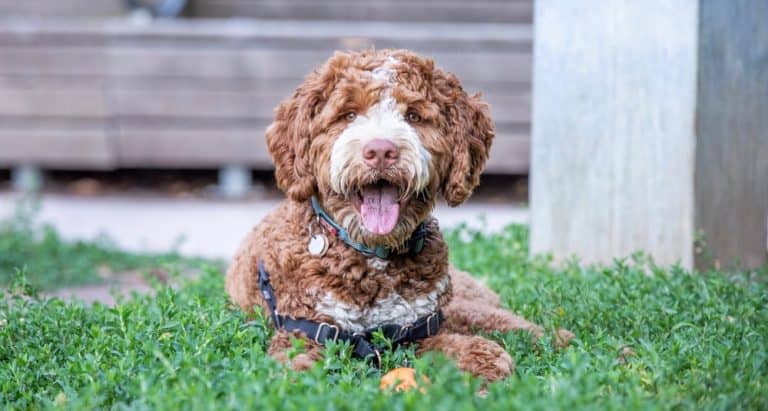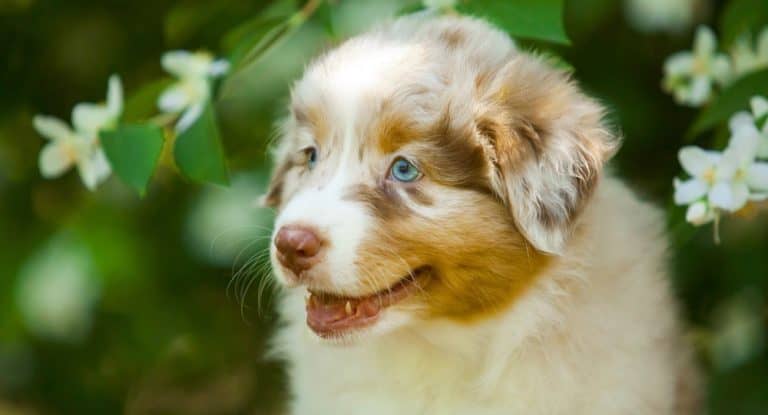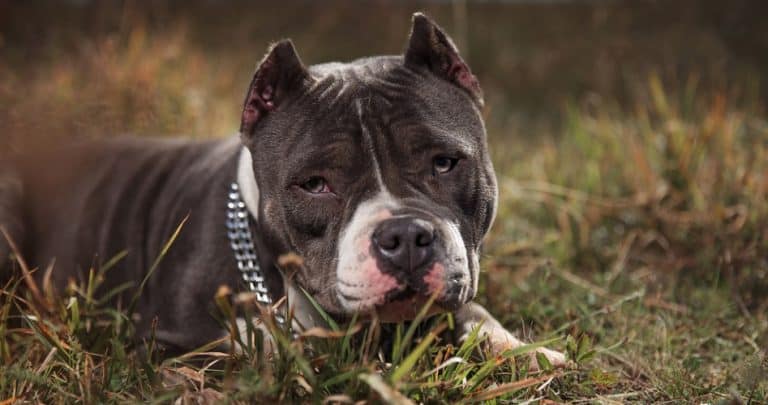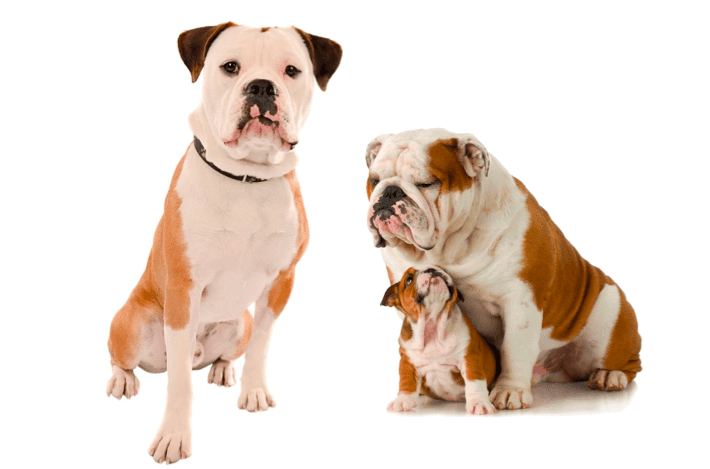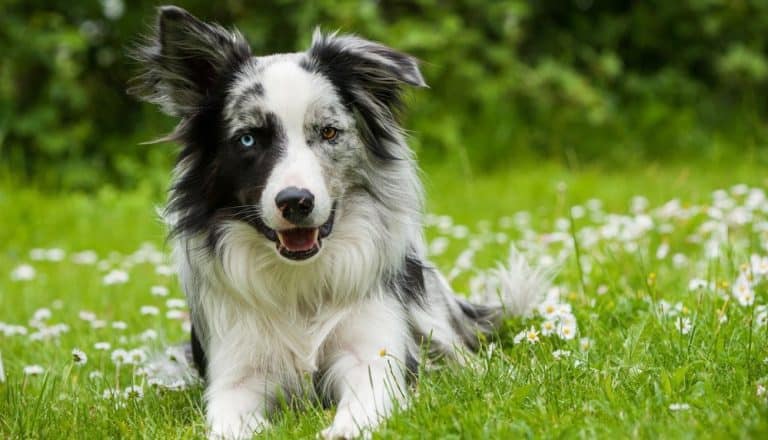Dameranian (Pomeranian Dachshund Mix): The Ultimate Guide
There are so many different kinds of dog breeds out there for you to choose from. Two popular breeds include the Pomeranian and Dachshund. They are both relatively small dogs that most people find to be adorable.
But what if you could have a dog with both appearance and characteristics? Well, if that’s what you’re after, you’re in luck! We’ve put together the ultimate guide about the Pomeranian Dachshund mix known as the Dameranian right here!
You need to know many things about the Dameranian before you actually get one. From its health issues to its temperament, this dog breed requires a great deal of care and understanding in order to live a comfortable life.
But don’t get overwhelmed! Everything you’ll read in this article is everything you’ll need to know… so let’s dive in!
What Is A Dameranian?
So what exactly is a Dameranian?
It is a dog that is a mix between the already existing breeds of Pomeranian and Dachshund. They go by lots of nicknames, some of which include Pomeranian Weiner Dog, Pom-Dach, Dach-Pom, Pom Weenie, Doxie Pom, and Pom-A-Weenie.
They usually range between small and medium sizes for dogs. Its fully grown size actually depends on the size of its parents.
The Dameranian will take on qualities of both breeds, but each Dameranian is unique in which traits it will end up picking up. Regardless of the traits though, you can definitely expect your Dameranian to be a dog that barks a lot. This will be because of it’s Pomeranian qualities.
Dachshund, Pomeranian, Dameranian: Side By Side Comparison
In order to understand what a Dameranian is like in personality and qualities, it’s important to understand a bit more about both the Pomeranian and Dachshund. We’ve put together a quick comparison guide that will help you with that:
| Breed | Dachshund | Pomeranian | Dameranian |
|---|---|---|---|
| Dameranian | Small to Medium | Small | Small to Medium |
| Life Span | 12 to 15 years | 12 to 16 years | 12 to 16 years |
| Coat | Smooth, wire-haired, or long-haired | Long | Long |
| Temperament | Mischievous, Playful, Clever | Friendly, Intelligent, Happy | Clinly, Friendly, Happy, Clever |
| Tolerance To Cold | Low | High | Medium |
| Barking Level | High | High | High |
| Kid-Friendly | Yes | Supervision with kids under 10 | Yes |
| Trainability | Hard | Medium to Easy | Medium |
| Grooming Needs | Depends on the coat | Medium to High | Medium to High |
As you can see, while all three breeds are very, very similar, there are a few qualities that are unique to each breed. If you already have experience with either a Dachshund or a Pomeranian, it will definitely make the introduction of a Dameranian into your house a whole lot easier.
If you don’t have experience with the two-parent breeds though, that doesn’t mean you can’t introduce a Dameranian into your household. It just means that you’ll have to do a lot of trial in error in your approach to the breed initially.
Once you start to understand your Dameranian though, you’ll pick up everything you need to do in no time!
History Of The Dameranian
It might surprise you to find out that Dameranians are actually a much newer crossbreed than some of the others. It is believed that the Dameranian first came to be sometime in the 1990s!
In the late 1900s, there was a craze known as the “designer dog” craze and this led to a lot of different breeds of dogs being bred together. Dameranians were the results of one of these crossbreeding.
But the parent-dogs of these Dameranians have been around for a lot longer. Both Pomeranians and Dachshunds are well respected in their own right and have very rich histories of their own.
Dachshunds originated in Germany sometime in the 15th Century. The purpose of the Dachshund was to be a hunting dog, specifically hunting animals such as badgers. They would do this by getting into the badger’s burrows and forcing them out.
This is why Dachshunds have such a unique, elongated body shape. The best qualities of the Dachshunds include intelligence and stubbornness and these qualities are still very prominent in the breed today.
Pomeranians on the other hand originated in Northern Europe, around where Poland and Western Germany are now, sometime in the 19th Century.
Although they have gotten smaller and smaller as the decades have progressed, Pomeranians were originally used as sled-pulling dogs. They became popular because they were Queen Victoria’s favorite breed of dog.
It was only in the late 19th Century that the two breeds were mixed together to create the Dameranian. But as you can see, the two parent breeds have had a very long history and have been widely loved by humans for a very long time.
Pros & Cons Of Owning This Breed
Like any breed, there are pros and cons to the Dameranian. When you’re considering introducing one into your life and home, it is important that you review these pros and cons carefully before you fully commit to raising one. Let’s have a look at the pros and cons now:
Pros
- If you’re looking for a family pet that will keep you, your partner and your children happy, a Dameranian is a perfect addition. They are extremely social and very affectionate.
Having a lot of human interaction also really helps with the Dameranian’s separation anxiety. The more family members you have, the less likely the Dameranian is to get distressed.
- If you live in a small space or somewhere that doesn’t have much room, this is another pro to having a Dameranian. They are a relatively small breed of dog, similar to their parents, so they don’t need a great deal of space to be able to live comfortably.
Because they get separation anxiety quite easily as well, having a small space where they know you’re close by can help soothe that anxiety.
- Another great pro about this breed is that they actually make good watchdogs, despite their size. They are a highly alert breed of dog that is prone to sensing danger and alerting you to that danger.
If a stranger or something dangerous comes too close to its territory, it will bark and keep you aware of it. Dameranians are incredibly loyal and protective of their owners.
Cons
- Though Dameranians are extremely cute, lovable, and loyal, there are a few reasons why some people would choose not to introduce one into their homes.
- If you’d rather have a quiet dog in your home, then you won’t have much luck with Dameranians. They are incredibly vocal and they are guaranteed to bark a lot.
They bark at practically anything as well, which is similar to the behavior of Chihuahuas. If you enjoy quiet environments or you live in a small apartment, this can be quite problematic or even annoying after a long period of time.
- As we’ve already mentioned, they are a breed of dog that really suffers quite heavily from separation anxiety. When they have gone too long without seeing you or hearing you, they can get quite disruptive.
Their separation anxiety can manifest in different ways, such as more barking and even destroying your belongings and property. They tend to exhibit lots of bad behavior when they are suffering from separation anxiety.
If you don’t spend much time at home, or you don’t have other family members who can spend time with them, a Dameranian probably isn’t the best fit for your lifestyle.
- You can try to train them in a few ways, one being crate training, to help ease their separation anxiety issues. You’ll want to do this early on though. The longer you leave it the harder it will be to stop.
- Another con of owning this breed is that they require a lot of grooming and are quite high maintenance in that sense. Their fur is very similar to their Pomeranian parent, and Pomeranian fur is notoriously known for getting everywhere.
Dameranians will shed a lot and their coat will “blow out” at least twice a year, so if you’re not prepared to regularly brush and groom them, you may want to reconsider getting this breed.
- If you’ve still got your heart set on getting a Dameranian, but you’re concerned about not having enough time to groom them, you can pay for a professional grooming service to help you out, but that will cost a considerable amount of money, especially if you’re going to them regularly.
So bare in mind that this can get quite expensive. Work out if you can afford to properly maintain the Dameranian’s grooming needs.

Size And Appearance
So what exactly is the size of a Dameranian and what does it look like? Well, it purely depends on the parents. They usually fall somewhere between 5 to 11 inches tall and they can weigh between 8 to 25 pounds.
The type of coat the Dameranian will have is also very dependent on the parents. Though they usually inherit a long and fluffy coat from their Pomeranian parent, there are some cases in which a Dameranian will inherit a short and smooth coat, like that of their Dachshund parent.
Their ear shape will usually be inherited from their Dachshund parent, looking more deer shaped, but on occasion, their ears will resemble their Pomeranian parent.
When it comes to the color of the Dameranian’s coat, it can be almost any color. But, just like its other features, the color will largely depend on what the coats on their parents look like.
Dachshunds tend to have coat colors like black, brown, chocolate, black, and cream, double dapple, black and tan, cream, dapple, and many many more. Dachshunds are known to have a lot of different coat colors, so this will give their Dameranian child a lot of potential coat colors.
Pomeranians have a lot of coat colors too, though not as many as Dachshunds. Some of these coat colors include orange, red, black, chocolate, black, and tan, or partially colored.
Because their parents have so many coloring options, it makes it quite difficult to be able to know what their coat coloring will be before they are born.
Though they can have a number of different coat colorings, Dameranians will usually have one of the following colors: brown, white, black, grey, blue, or tan. These are the most common, regardless of the parent’s color.
You will see traces of the parents color in the coat of your Dameranian though, so keep an eye out for any similarities.
Temperament
When you first look at a Dameranian, you will automatically assume that because they are small, fluffy, and cute, there isn’t going to be much more to them than that. However, this is definitely not the case!
Because their parents are Dachshunds and Pomeranians, the Dameranian is 100% going to inherit the traits of both of these breeds. Dachshunds are known for being very intelligent and stubborn, and Pomeranians are known for being very clever and friendly.
One of the biggest traits a Dachshund is known for is it’s bravery and loyalty, and these traits are very apparent in Dameranians.
Dameranians may be quite small, but they are fiercely protective of the family they are a part of. They will warn their humans of any danger that is in close proximity and they will defend you against anything they think will harm you.
Their status as good watchdogs definitely shouldn’t be overlooked or ignored!
Because they inherit the intelligence of their parents, they need lots of mental stimulation, so you’ll need to play with them a lot and give them toys that will really make their brains work.
They also inherit their loyalty from their Dachshund parents and will grow extremely attached to the human that is closest to them. But because they are incredibly stubborn, and clever and grow so attached to their humans, this is what can cause them to have such bad separation anxiety.
Dameranians are incredibly social dogs, so they will need to be in an environment that will cater to this need. Their need for social interaction can be fulfilled by being around humans as much as possible and being played with, but they are also pretty good at being around other dogs.
So if there does come a time when you do need to leave them for a while and you can’t find a human to look after them, you can take them to a doggy daycare centre and this shouldn’t be a problem as long as they are used to other dogs.
It’s in both your and your Dameranian’s best interest not to leave them alone for long periods of time. Their separation anxiety and need for socializing make it so they can’t handle it. So make sure that you cater to this need above almost all of their other needs.
A happy Dameranian that isn’t suffering from separation anxiety is a lot easier to care for than one that isn’t having these needs met.
Life Expectancy
If you’re looking for a dog that can grow up with your children or stay in the family for a good amount of years, then the Dameranian is a perfect choice breed for you to get.
Dameranians have a life expectancy span of between 12 to 16 years as long as they don’t have any underlying health problems. Unfortunately, Dameranians are prone to having lots of health problems that can shorten the span of their lives.
Their life expectancy and health problems can also directly come from their parents. If one of their parents suffered from a certain health condition, there is a high chance it will be passed along to them.
If your Dameranian is completely healthy with no health issues of any kind though, you can expect them to live for a nice and comfortable 12 to 16 years before you have to worry about their health naturally declining.
Health Problems
Now that you know that Dameranians are known for having health problems, it’s important that you’re informed about what you can expect if yours does have some.
The most common health problems a Dameranian can suffer from are trachea collapse, allergies, Legg-Perthes, hip dysplasia, bloat, Cushing’s, diabetes, patellar luxation, dental disease, back problems, and eye disease.
Some of these health problems and conditions are manageable and your Dameranian can live a happy and long life regardless, but some of these problems can cause a negative effect on your Dameranians life.
It is important to always take your Dameranian to the vets for regular checkups in order to keep an eye out for any of these health problems. On top of these regular checkups, you can also get your Dameranian treated and checked for fleas and ticks, vaccines, and bloodwork.
Unfortunately, this can get extremely expensive. If you choose to keep a Dameranian in your care, you will have to be prepared to pay these veterinary bills.
Dameranians need these regular checkups and treatments in order to optimize their lifespan and health, so there really is no avoiding these trips in order for your dog to live a happy and healthy life.
You may want to consider putting your Dameranian on a pet insurance plan. This can cut some of the initial cost and make it easier to manage financially.
Dameranians are high-maintenance dogs that require a lot of medical care, so if you can’t really afford these veterinary visits or a pet insurance plan, it’s probably better for you to look for another dog that doesn’t require as much medical care.
Behavior Around Children
As we’ve already discussed in previous sections, the Dameranian breed is an excellent family dog. Because they are such social animals and they require a lot of high-energy play, children are great playmates!
Dameranians are also incredibly affectionate and this will help in building and strengthening bonds between the dog and any children it is having regular interactions with.
The loyalty trait of your Dameranian also means they will be fiercely protective towards your children, and who wouldn’t be comforted to know that their dog is their children’s bodyguard?
However, it is important to note that if you have any small children under the age of 10 who will be around your Dameranian consistently, you need to make sure the dog and children are supervised constantly.
Because Dameranians are smaller dogs, they are a lot more vulnerable and this also applies to smaller children.
This doesn’t mean that Dameranians are not great around smaller and younger children though. All you have to do is keep both the dog and the children supervised and train them both to be able to be around each other.
Once they have built up a relationship and understanding, the Dameranian and children will be able to spend more time alone together without the risk of accidents.
Dameranians are also a great dog to introduce to younger children because they will teach your child about communication, connection, trust, and boundaries.
Exercise And Physical Wellbeing
As you already know by now, Dameranians are very high-active dogs that need a lot of mental stimulation. You also need to make sure your Dameranian is getting enough physical exercise in order to keep them stimulated and healthy.
Luckily, because they are smaller dogs, the level of exercise they need isn’t as demanding as larger, more active dogs. On average, a Dameranian needs between 30 to 60 minutes of exercise a day, depending on its size and weight.
Because they are so small, they can get a lot of their energy out just running around in their home setting, so if you live in a small house or apartment, they can still get exercise on the days you can’t take them out.
But you should never rely on this as their main form of exercise. Dameranians need to spend time outside, so the best way to do that is to take them for a brisk walk around the block or in a local park.
They also absolutely love to play games like fetch, and if you’re playing this with them outside for a consistent 30 minutes, that will be enough exercise for the day that will benefit them.
Making sure they spend enough time outside and getting their required physical activity not only helps their health, but it also helps with their mental wellbeing.
Because they are intelligent dogs with a lot of brain power, this physical exercise allows them to use their brains and can prevent them from playing up or exhibiting any antisocial behavior.
Dameranians And Interactions With Other Pets
Though Dachshunds are known for their high prey drive, the Pomeranian aspects of the Dameranian help to tone that high prey drive right down.
If you have other pets that are smaller than your Dameranian, such as hamsters, guinea pigs, or rabbits, you should definitely make sure that they are supervised.
The prey drive in Dameranians isn’t as fierce or prominent as it is with their Dachshund parents, but it is still there. So any animals that are considered prey or smaller than your Dameranian can still be at risk if they are left unsupervised.
When it comes to other cats and dogs, Dameranians usually get on really well with them. So if you have any cats or dogs in your household already, you shouldn’t have much issue.
That being said, you should make sure that you introduce the already existing pets to the Dameranian in the right way. Make sure they get used to each other’s scents and are kept out of the same rooms until they are comfortable.
You will have to monitor and supervise them when they are together for the first couple of weeks or months, but once they are used to each other, you won’t have to worry about any accidents or altercations happening.
Feeding Your Dameranian
Because Dameranians are small dogs, you don’t have to worry about feeding them a huge quantity of food. On average, they need about 1 to 1 ½ cups of food every day.
If they are a little bit bigger or smaller than the average Dameranian size, then you need to take this into consideration when feeding them, but overall you can stick to the standard cup quantity we’ve provided here.
Depending on what dog food you choose, there will be guidelines and instructions on the label anyway, so if you’re not sure, look out for that. It’s usually suggested to divide their daily intake over 2 or 3 meals to keep them energized and fed throughout the day.
Dameranians get on really well with kibble and fish oils are also a great choice for their dietary needs. Fish oil actually helps to give them a glossy and healthy coat and also prevents them from getting any skin issues.
You will want to avoid putting them on raw or grain-free diets.
Raw food diets can cause your Dameranian to get salmonella poisoning and cause antibiotic resistance, whereas grain-free diets are heavily linked with life-threatening heart conditions that your Dameranian can develop if they are on this diet.
When in doubt though, talk to your vet. They will be able to tell you the best things to feed your Dameranian, how much food a day they should be having based on their size, and any foods or diets you should be avoiding.
If you’re paying for a vet, you should definitely use that fee to your advantage!
The Cost Of Having A Dameranian
If you’re definitely set on having a Dameranian by this point, then you need to know that it’s quite expensive to keep one.
It’s not going to cost you an extortionate amount of money, but keeping a Dameranian will definitely take a wedge off your finances.
It’s going to be more expensive for you to buy one from a breeder than it is to adopt one from a shelter, but it depends really on how much you’re willing to spend.
On top of that, you need to make sure you have enough extra money to pay for its medical care and veterinary bills.
Conclusion
As you can see, there is a lot more to keeping a Dameranian than just their cuteness! You have to make sure that they are properly fed, their health is regularly monitored and above all, you need to keep their separation anxiety in check!
When you establish a routine and you become more familiar with your Dameranians needs though, you will have a lovely time bringing up and caring for your dog.
When a Dameranian establishes a close relationship and bond with its humans, it’s a very beautiful thing that shouldn’t be overlooked.
You’ll always have a loyal friend when you choose to properly care for a Dameranian! And their cuteness doesn’t stop being apparent, no matter how old they are.
Hopefully, this guide has helped you understand the Dameranian a bit more and you feel a lot more confident in raising one now! Good luck and enjoy all this beautiful dog breed has to offer!

